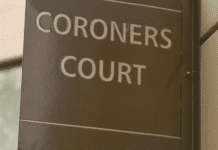There is a lot of anecdote that cannabis oil beats cancer. Where anecdote lies, so scientists look. So far, no human level trials of cannabinoid chemotherapy has taken place – they’re still torturing mice at the moment – but in torturing mice there has been some very interesting science. Science that may cure certain breast cancers, prostate cancers and Glioma (a cancer of the nervous system).
So far, things are once again pointing to the endocannabinoid system and my old favourite non psychoactive cannabinoid Cannabidiol (CBD), though THC is a major player in this too. Even without busting tumours, pharmaceutical companies are close to licensing cannabinoid medicines for appetite loss and cancer pain.
As discussed in my blog on the endocannabinoid system, CBD seems to prevent the reuptake of endocannabinoids rather than binding to any receptor itself. In short CBD seems to allow the body to keep its own endocannabinoids at a level the body needs to fight a certain illness. After centuries of looking for the “magic bullet” of drugs, we may well have it grown in a plant that has quietly got people stoned since man first discovered a burning bush could make him feel chilled and happy. Cannabis treating two of the worst illnesses – schizophrenia and cancer? Quite some magic bullet!
Dorset based GW Pharmaceuticals are working on all five treatments above – three cancers and two conditions associated with cancer. Reading through their page on oncology, it seems that cannabinoid chemotherapy will work where there are concentrations of endocannabinoid receptors. There are ECB receptors in the prostate, breasts and the nervous system. Thus, altering cannabinoid and endocannabinoid levels in the cancer patient’s system will drive the body into killing off old cells and prevent others from mutating.
Cancer cells are cells that become “immortal” and mutate. Essentially in areas sensitive to cannabinoids, increasing cannabinoid levels will restore the body’s homeostasis – cells won’t live forever, and they won’t form tumours.
GW says that “A normal function of remodelling in the body requires that cells die on cue. This is called apoptosis, or programmed cell death and this process fails to proceed normally after malignant transformation.” Increasing cannabinoid levels in the system will allow cells to die normally and be replaced in the normal way.
GW claim that cannabinoids seem to prevent tumours from creating their own blood supply as well. Tumuors “send out signals to promote angiogenesis, the growth of new blood vessels. Cannabinoids may turn off these signals as well.”
One has to note the part that says “pre clinical trials”. This will mean that research is being done into petri dish cancer tumours and on lab mice. It is far from the point where they understand enough to trial cannabidiol on human cancers. The wealth of human level research into the clinical benefits of CBD suggest that there will be little harm in trialling this – in trials on monkeys, they had to pump the animals with something like three quarters of their bodyweight of CBD to kill them in so called “Lethal Dose 50 trials”.
Moving onto other treatments for conditions associated with cancer, anorexia and cancer pain, we are well aware of pain relief and the munchies. In an ideal world of legalised cannabis there will be late night cake shops selling sticky buns and chocolate cake with people queuing up quietly for a feed before finding their way home from the cafe…
In causing the munchies, so cannabis helps the cancer patient fight his own illness by giving him hunger. By eating the right thing, so the body can use its other internal resources to fight the tumours within. Traditional chemotherapies leave the patient without appetite and feeling nauseous. In regaining their hunger, so they help the chemo fight the fight – one of the major issues around chemotherapy is that it can kill in its own right by reducing appetite and the patient wasting away.
GW’s website again:
“Anorexia [is] diagnosed in over sixty percent of advanced stage cancer patients, and are independent risk factors for morbidity and mortality. However, therapeutic regimens often prove ineffective, and the quality of life of many patients is significantly impaired by these symptoms. In 1986, an oral THC capsule was licensed in the United States as an anti-emetic in cancer patients receiving chemotherapy. THC has also demonstrated significant stimulation of appetite and increase of body weight in HIV-positive and cancer patients”.
Finally, to the nearest likely UK license for Sativex, cancer pain may well be treated with this cannabis spray within 2-3 years. GW are in late stage license application.
For all the issues people have around GW Pharma and the costs of getting hold of their medications, they are leading the way in cannabinoid treatments. They show in unarguable science the great variety of treatments that cannabis can be used for. Until the government officially recognizes the therapeutic benefit of cannabis, they are perhaps the best hope for changing its mind on therapeutic cannabinoids.
Originally published on the NORML UK blog https://norml-uk.org
Richard Shrubb












